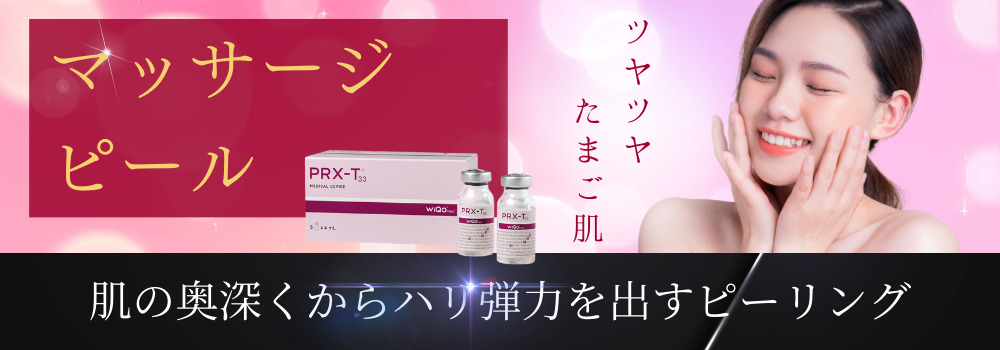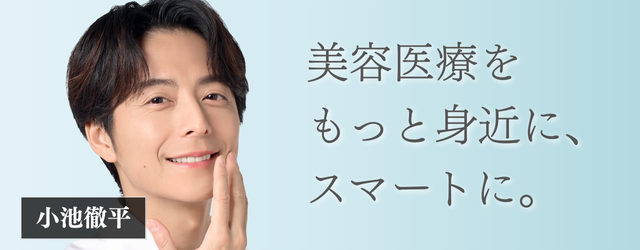Can chemical peels cure acne scars? Explanation of Effective and Ineffective Cases

Is it true that chemical peels can heal acne scars?"
What kind of acne scars does it help?"
Thus, those who are concerned about the effects of chemical peels on acne scars need to first confirm the cases in which they are effective and those in which they are not.
Chemical peels are a treatment that peels off the stratum corneum of the skin to promote turnover and improve dullness and pigmentation of the skin. This treatment is effective only for some acne scars, not all of them can be improved.
In this article, we will discuss in detail the effects of chemical peels on acne scars.
Chairman of Smart Skin Clinic Group
stone Kouta
career
Graduated from Juntendo University School of Medicine
Tokyo Women's Medical University Hospital and related facilities
Worked at a major beauty clinic in Tokyo
Affiliation / Qualifications
Japan Surgical Society Specialist
Japanese Society of Anti-Aging Medicine
Acne scars that can be improved with chemical peels
Acne scars are classified into the following types in order of progression
Skin redness
Dullness due to hyperpigmentation
Craters, keloids
Of the above, the only acne scars that may be improved by chemical peeling are "redness" and "dullness due to hyperpigmentation. Acne scars that have progressed to craters or keloids cannot be improved by chemical peeling.
Treatments such as massage peels, photofacials, and dermapen4 are considered effective in improving acne scars of craters.
Incidentally, Smart Skin Clinic offers not only chemical peels but also massage peels, photofacials, and dermapen4 to improve various acne scars.
Mechanisms by which chemical peels lead to improvement of acne scars
Chemical peeling is a treatment that exfoliates dead skin cells on the surface of the skin to promote the renewal of new skin. Since redness and dullness caused by acne scars occur on the surface of the skin, chemical peeling can be expected to improve them by exfoliating the surface of the skin.
Dullness from acne scars is caused by melanin pigment deposited on the skin due to excessive production caused by inflammation of acne. Normal turnover cannot keep up with the discharge of melanin pigments, so they are deposited on the skin.
Therefore, if turnover is stimulated by chemical peeling, melanin pigment will be expelled along with old keratin, and the dullness will fade.
Since turnover occurs constantly regardless of age, the dullness of acne scars will gradually disappear over time, even with no treatment.
However, for those in their 30s and beyond, whose metabolism is declining, melanin pigments are not easily expelled and remain on the surface of the skin. That is why it is important to aim for improvement through chemical peeling.
Types of chemical peels that can be used to treat acne scars
There are three types of chemical peels, all of which can be effective for acne scars. The features of each type of chemical peeling are explained in detail.
Glycolic acid peeling
Glycolic acid is considered a suitable ingredient for chemical peels because it stimulates turnover by weakening the adhesion between the keratinocytes that make up the stratum corneum.
lacto peeling
Lacto peeling, also known as lactic acid peeling, is a chemical peel that improves symptoms in the shallow layers of the skin by using lactic acid, which has a larger molecular size than glycolic acid. It inhibits the production of melanin pigment by suppressing the action of tyrosinase, which is the cause of melanin.
Salicylic acid macrogol peeling
Salicylic acid-macrogol peels are chemical peels that use a combination of salicylic acid, which dissolves dead skin cells, and macrogol, which protects the skin. When salicylic acid alone is used, it acts deep into the skin, causing symptoms such as pain and redness. With macrogol salicylic acid, the skin-protecting action of macrogol prevents salicylic acid from penetrating deep into the skin, resulting in shorter downtime after treatment.
Number of treatments required to remove acne scars with chemical peels
Chemical peels can be effective with multiple treatments. The number of treatments required varies from person to person, but it is advisable to have at least five treatments.
The frequency of visits is once every 2 to 4 weeks. Since the number of treatments and frequency of treatment depends on the constitution and symptoms of the patient, please consult your doctor first.
Cautions for chemical peels for acne scars
The following precautions should be taken when undergoing chemical peels for the purpose of removing acne scars.
Possible increase in acne.
Chemical peels temporarily reduce the skin's barrier function. When the barrier function is reduced, excessive sebum is secreted to protect the skin. This sebum clogs the pores and mixes with dead skin cells to form white pimples, which become inflamed to form red pimples.
Thus, it is important to keep in mind that there is a possibility of a temporary increase in acne after undergoing a chemical peel. However, keeping the skin as good as possible with proper cleansing and moisturizing care can reduce the occurrence of acne.
Temporary pore size becomes more noticeable.
When the skin barrier function is compromised by chemical peels, pores may temporarily become more prominent. This is because chemical peels exfoliate the skin, which dries out the pore skin and disrupts its texture.
This is only a temporary condition and is not cause for concern. However, if chemical peels are repeatedly undergone without a sufficient period of time, there is a risk that the pores may remain prominent. After consulting with a trusted physician, follow his or her instructions and undergo chemical peels at the appropriate frequency and frequency.
Recommended treatment for improvement of crater acne scars
The following treatments are recommended for crater acne scars
Massage peel
Massage peel is a peel that uses a combination of highly concentrated trichloroacetic acid (TCA), low concentrated hydrogen peroxide (H2O2), and kojic acid. The agent is absorbed into the skin while massaging.
Unlike conventional chemical peels, this treatment improves acne scars of craters by restoring skin elasticity and firmness by approaching collagen deep within the skin rather than on the surface. It is not expected to be effective for red or dull acne scars, so it should be used in combination with chemical peels as needed.
Photofacial
Photofacial is a treatment to improve skin problems by irradiating the skin with a special light called IPL (Intense Pulsed Light). By breaking down melanin pigment, it improves acne scars caused by hyperpigmentation. It also approaches not only melanin pigmentation but also fibroblasts to stimulate collagen production, leading to the improvement of acne scars caused by craters.
For more information on photofacials, see also.
Dermapen4
Dermapen4 is a treatment that uses a very fine needle to make small holes at depths ranging from 0.20 to 3.0 mm to activate turnover. As the skin repairs, elastic components such as collagen and elastin increase, leading to improvement of crater acne scars.
In addition, the stimulation of turnover speeds up the elimination of melanin pigment, which can be expected to be effective for hyperpigmentation-type acne scars.
Smart Skin Clinic can treat all types of acne scars
Smart Skin Clinic offers a variety of treatments, including massage peels, photofacials, and dermapen4 as well as chemical peels. As a result, we can improve various types of acne scars, from redness to hyperpigmentation to craters.
For the price of our acne scar treatment,this way (direction close to the speaker or towards the speaker)for more information.





